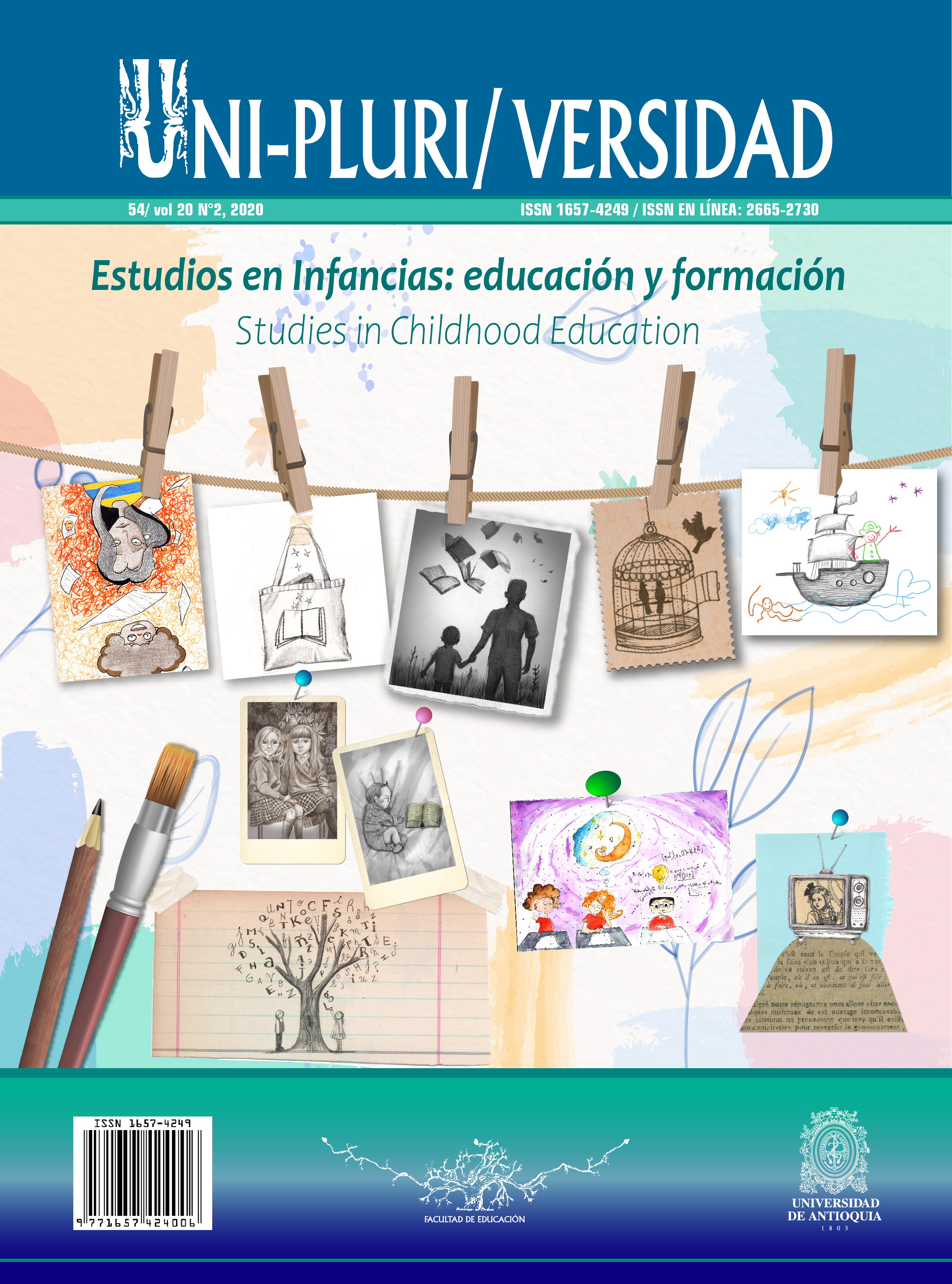Learning Styles: A Study in Nursing University Students
DOI:
https://doi.org/10.17533/udea.unipluri.20.2.012Keywords:
learning styles, teaching, nursingAbstract
This research aims to identify the learning styles in nursing university students through a quantitative study. The type of study is descriptive, prospective, and cross-sectional, with a population of 375 students chosen by census. They completed the Learning Styles sur vey, and their answers were analyzed through descriptive statistics. The results show that the students have a very high preference for a theoretical style and a low preference for a reflective one. It indicates that preferences are associated with the styles of “concrete experiences”, “abstract conceptualizations” and “active experimentation”, but they are not linked to “reflective observation”.
Downloads
References
Alonso, C. (1992). Análisis y Diagnóstico de los Estilos de Aprendizaje en Estudiantes Universitarios. Tomo II. Editorial de la Universidad Complutense. Colección Tesis Doctorales. Madrid
Alonso, C. M., Gallego, D. J., y Honey, P. (2007). Los Estilos de Aprendizaje: Procedimientos de diagnóstico y mejora. Recuperado de https://www.researchgate.net/publication/311452891_Los_Estilos_de_Aprendizaje_Procedimientos_de_diagnostico_y_mejora.
Alonso, C. M., Gallego, D. J., y Honey, P. (1994). Estilos de Aprendizaje. ¿Qué son? ¿Cómo se diagnostican? Bilbao: Ed. Mensajero.
Alonso, C. M., Gallego, D. J., y Honey, P. (2012). CHAEA. Cuestionario Honey-Alonso de Estilos de Aprendizaje. Bilbao, España: Ediciones Mensajero.
Andreou, C., Papastavrou, E., y Merkouris, A. (2014). Learning styles and critical thinking relationship in baccalaureate nursing education: A systematic review. Nurse Educ Today, 34(3), 362-71.
Bobadilla, B. S., Cardoso, J. D., Carreño, S. L., y Márquez, G. J. O. (2017). Estilos de aprendizaje en estudiantes de la licenciatura en psicología del centro universitario UAEM Temascaltepec, 2016. RIDE. Revista Iberoamericana para la Investigación y el Desarrollo Educativo, 7(14), 34- 50. https://dx.doi.org/10.23913/ride.v7i14.271.
De Carvalho, P., Brito, E., De Godoy, S., Mazzo, A., Trevizan, M., y Costa, I. (2013). Individualized teaching programming for a virtual learning environment: development of content concerning nursing records. Rev Lat Am Enfermagem, 21 (spec), 122-130.
Domínguez, R. H. J., Gutiérrez, L. J. A., Llontop, P. M., Villalobos, T. D., y Delva, E. J. C. (2015). Estilos de aprendizaje: un estudio diagnóstico en el centro universitario de ciencias económico-administrativas de la U de G. Revista de la educación superior, 44(175), 121-140. Recuperado de http://www.scielo.org.mx/scielo.php?script=sci_arttext&pid=S0185-27602015000300006&lng=es&tlng=es.
Flores, K., Matkin, G., Burbach, M., Quinn, C., y Harding, H. (2012). Deficient critical thinking skills among college graduates: Implications for leadership. Educational Philosophy and Theory, 44(2): 212-230.
Honey, P., y Mumford, A. (1986). The Manual of Learning Styles. Maidenhead, Berkshire: Ardingly House.
Jiménez, L. S., Vega, N., Capa, E. D., Fierro, N. del C., y Quichimbo, P. (2019). Estilos y estrategia de enseñanza-aprendizaje de estudiantes universitarios de la Ciencia del Suelo. Revista Electrónica de Investigación Educativa, 21, e04, 1-10. doi:10.24320/redie.2019.21.e04.1935.
Kolb, D. (1984). Experiential learning experiences as the source of learning development. Nueva York: Prentice Hall.
Ley General de Salud. (2018). Nueva Ley Publicada en el Diario Oficial de la Federación el 7 de febrero de 1984. Recuperado de http://www.diputados.gob.mx/LeyesBiblio/pdf/142_241218.pdf.
Moreno, I. M., y Siles, J. (2014). Pensamiento crítico en enfermería: de la racionalidad técnica a la práctica reflexiva. Aquichan, 14 (4), 594-604.
Murphy, S., Hartigan, I., Walshe, N., Flynn, A., y O’Brien. S. (2011). Merging problem-based learn¬ing and simulation as an innovative pedagogy in nurse education. Clinical Simulation in Nursing. 7(4), 141-148.
Navarro, S. G. (2015). Construcción de conocimiento en educación superior. Educación de compe¬tencias genéricas en la Universidad de Concepción, Chile. Concepción, Chile: Sello Editorial Universidad de Concepción. 325 p.
OMS. (2015). Definición de enfermería. Recuperado de http://enfermeria-udlap.blogspot.com/2015/11/definicion-de-enfermeria-segun-la-oms.html.
OPS. (2011). Regulación de la Enfermería en América Latina. Título 1, Serie II. Recuperado de ht¬tps://www.paho.org/hq/dmdocuments/2012/nursing-regulacion-alatina-2011-esp.pdf.
Sepúlveda, M., López, M., Torres, P., Luengo, J., Montero, E., y Contreras, E. (2011). Diferencias de género en el rendimiento académico y en el perfil de estilos y de estrategias de aprendizaje en estudiantes de química y farmacia de la Universidad de Concepción. Revista Estilos de Aprendizaje, 7(7), 1-19.
Universidad Veracruzana. (2013). Plan de estudios de la Facultad de Enfermería 2013. Recuperado de https://www.uv.mx/pozarica/enfermeria/files/2016/06/Plan-de-Estudios-2013.pdf.
Downloads
Published
How to Cite
Issue
Section
License
Copyright (c) 2021 Universidad de Antioquia

This work is licensed under a Creative Commons Attribution-NonCommercial-NoDerivatives 4.0 International License.
Authors who have publications in this Journal accept the following terms:
- The content of each article is the responsibility of its authors
- The author(s) preserve(s) the moral rights over the article and transfer(s) the patrimonial rights to the University of Antioquia, which can publish it or distribute electronic copies, as well as include it in indexing services, directories or national and international Open Access data bases, under the Creative Commons Attribution License (CC BY-NC-ND).
- The author(s) should sign a declaration of transfer of economic rights to the University of Antioquia, after the acceptance of the manuscript.
- Authors are allowed and advised to disseminate their work through the Internet (eg, institutional telematic archives or their website) before and during the submission process. That can produce interesting exchanges and increase citations of the published work.
- The author(s) has (have) the responsibility to arrange and get the necessary permissions to reproduce any material protected by copyright.











